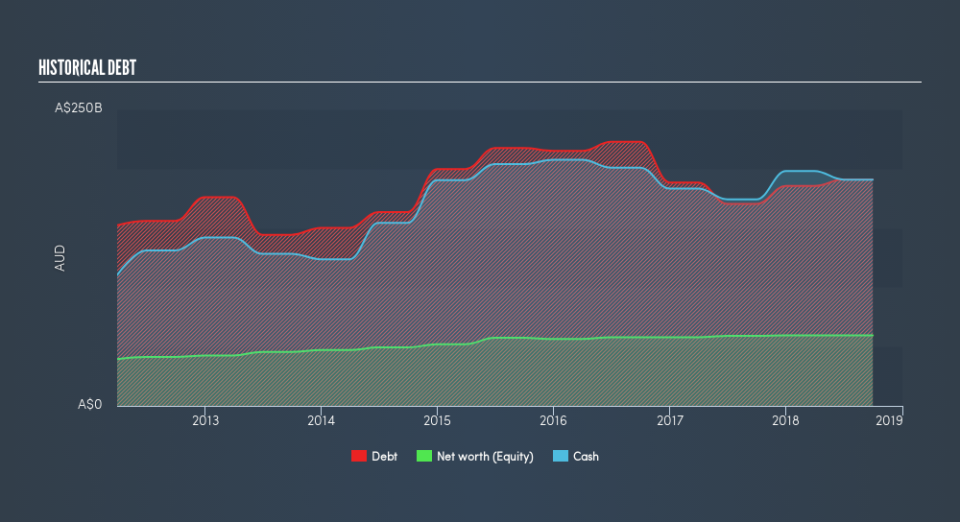Can These Factors Give You An Edge In Australia and New Zealand Banking Group Limited (ASX:ANZ)?

Australia and New Zealand Banking Group Limited (ASX:ANZ) is a large-cap stock operating in the financial services sector with a market cap of AU$78b. As major financial institutions return to health after the Global Financial Crisis, we are seeing an increase in market confidence, and understanding of, these “too-big-to-fail” banking stocks. A set of reforms called Basel III was imposed in order to strengthen regulation, supervision and risk management in the banking sector. Basel III target banking regulations to improve the sector’s ability to absorb shocks resulting from economic stress which may expose financial institutions like banks to vulnerabilities. ANZ operates predominantly in and is held to stringent regulation around the type and level of risk it can take on, exposing it to higher scrutiny on its risk-taking behaviour. We should we cautious when it comes to investing in financial stocks due to the various risks large banks tend to face. Today we will analyse some bank-specific metrics and take a closer look at leverage and liquidity.
Check out our latest analysis for Australia and New Zealand Banking Group
Why Does ANZ’s Leverage Matter?
Banks with low leverage are better positioned to weather adverse headwinds as they have less debt to pay off. A bank’s leverage may be thought of as the level of assets it owns compared to its own shareholders’ equity. Though banks are required to have a certain level of buffer to meet its capital requirements, Australia and New Zealand Banking Group’s leverage level of 15.87x is significantly below the appropriate ceiling of 20x. This means the bank has a sensibly high level of equity compared to the level of debt it has taken on to maintain operations which places it in a strong position to pay back its debt in unforeseen circumstances. If the bank needs to firm up its capital cushion, it has ample headroom to increase its debt level without deteriorating its financial position.
What Is ANZ’s Level of Liquidity?

As abovementioned, loans are quite illiquid so it is important to understand how much of these loans make up the bank’s total assets. Generally, they should make up less than 70% of total assets, which is the case for Australia and New Zealand Banking Group’s ratio at 64%. This is a reasonable ratio and suggests that slightly over half of the bank’s total assets are tied up in the form of illiquid loans, striking an appropriate balance between liquidity and interest income.
What is ANZ’s Liquidity Discrepancy?
A way banks make money is by lending out its deposits as loans. These loans tend to be fixed term which means they cannot be readily realized, however, customer deposits are liabilities which must be repaid on-demand and in short notice. The disparity between the immediacy of deposits compared to the illiquid nature of loans puts pressure on the bank’s financial position if an adverse event requires the bank to repay its depositors. Since Australia and New Zealand Banking Group’s loan to deposit ratio of 98% is higher than the appropriate level of 90%, this level positions the bank in a risky spot given the potential to cross into negative liquidity disparity between loan and deposit levels. Essentially, for A$1 of deposits with the bank, it lends out more than A$0.9 which is risky.
Next Steps:
The bank’s liquidity and leverage ratios suggest its sensible operational risk management. This means it is well-placed to meet its financial obligations in the case of any adverse and unpredictable macro events. We’ve only touched on operational risks for ANZ in this article. But as a stock investment, there are other fundamentals you need to understand. Below, I’ve compiled three key factors you should further examine:
Future Outlook: What are well-informed industry analysts predicting for ANZ’s future growth? Take a look at our free research report of analyst consensus for ANZ’s outlook.
Valuation: What is ANZ worth today? Has the future growth potential already been factored into the price? The intrinsic value infographic in our free research report helps visualize whether ANZ is currently mispriced by the market.
Other High-Performing Stocks: Are there other stocks that provide better prospects with proven track records? Explore our free list of these great stocks here.
We aim to bring you long-term focused research analysis driven by fundamental data. Note that our analysis may not factor in the latest price-sensitive company announcements or qualitative material.
If you spot an error that warrants correction, please contact the editor at editorial-team@simplywallst.com. This article by Simply Wall St is general in nature. It does not constitute a recommendation to buy or sell any stock, and does not take account of your objectives, or your financial situation. Simply Wall St has no position in the stocks mentioned. Thank you for reading.

 Yahoo Finance
Yahoo Finance 
